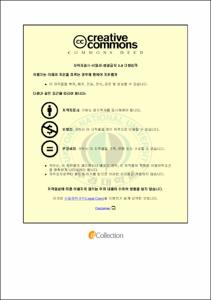패러디를 활용한 시 교육 방법 연구
- Alternative Title
- A Study on Teaching Method of Poetry Education through Parody : Focused on the poem of Lee, Yong-ak's 「Old House」
- Abstract
- Education in literature should be of help readers to make their lives more abundant through the process of internalization of literature. For this, there are needs for studies about teaching methods to appreciate poetry in various ways. If the study about various teaching methods are done by considering the features of modern society’s structure like flood of mass media, then students would feel fun and interest to learn literature, then this would be a proper way to foster readers who enjoy reading. Thus, the material should be multi-sided by active applying popular culture to education in literature. On this thesis, as a concrete method to make materials be multi-sided, application of ‘parody technique’ was applied to the class of modern poetry.
The summary of this thesis is as following:
In chapter II, the relationship between parody and the education of modern poetry was comprehended, and the present situation and the problems of education of modern poetry in the current school education was searched.
In chapter III, the proper teaching-learning model for poetry education by applying parody through the reviewing of previous teaching-learning models as a theoretical background about the procedure was suggested. As a theoretical background about methodology, five types of parody and poetry education methods that are applicable to the modern poetry education were suggested.
In chapter IV, the whole two periods of teaching-learning instruction plan for 「Old House」 based on the teaching-learning model’s phases that was designed in chapter III were suggested. In addition, detailed education methods and parody activities that five types of parody were applied to 「Old House」 were examined.
In chapter V, by suggesting the expectation effect about poetry education by applying parody and examination of the desirable direction and tasks of poetry education, so more active and positive poetry education would be possible.
Creation process of parody text is the process that creates new text on the assumption of further comprehension and appreciation of original text. That is, if students learn poetry by applying parody get out of learning and memorizing poetry according to existing teaching method, then deep comprehension about original text as well as creative thinking powers can be developed and they can be independent readers. This thesis has its significance to fulfill creative and various poetry education methods away from stereotyped classes by proper application to the school sites based on studies on the creative and active education methods by applying parody.
- Issued Date
- 2011
- Awarded Date
- 2011. 8
- Type
- Dissertation
- Publisher
- 부경대학교 교육대학원
- Alternative Author(s)
- Eun Young Jeoung
- Affiliation
- 교육대학원
- Department
- 교육대학원 국어교육전공
- Advisor
- 조동구
- Table Of Contents
- Ⅰ. 서론 1
1. 연구목적 1
2. 선행연구 검토 3
3. 연구 방법론 9
Ⅱ. 현대시 교육과 패러디 15
1. 패러디를 활용한 현대시 교육 15
2. 현행 교육과정에서 패러디 교육의 문제점 17
가. 현대시 패러디 교육의 현황 17
나. 현대시 패러디 교육의 문제점 19
Ⅲ. 패러디를 활용한 시 교육 방법 22
1. 패러디를 활용한 시 교육 교수⋅학습 모형 22
가. 선행 교수⋅학습 모형의 검토 22
나. 패러디를 활용한 시 교육 교수⋅학습 모형 구안 29
다. 패러디를 활용한 시 지도 방법 31
2 패러디를 활용한 시 교육 방법론 40
Ⅳ. 패러디를 활용한 이용악 「낡은 집」교수⋅학습 방안 47
1. 패러디를 활용한 시 교육 방법 47
가. 준비단계 48
나. 이해단계 51
다. 창작단계 58
라. 평가단계 59
2. 패러디를 활용한 시 교육 교수⋅학습 지도안 62
가. 모형 적용에 주의 할 점 62
나. 차시별 전개 계획 63
다. 교수⋅학습 지도안 64
3. 패러디 유형에 따른 시 교육 방법론 69
4. 기대효과 또는 시 교육의 바람직한 방향과 과제 76
Ⅴ. 결론 85
참고문헌 88
자료 92
1. 패러디 개념 도출하기 92
2. 담화의 틀 찾기 94
3. 패러디 계획서 작성하기 96
4. 희곡 패러디(학생작품) 97
5. 소설 패러디 (학생작품) 99
6. 포스터 패러디 (학생작품) 101
7. 만화 패러디 (학생작품) 102
8. 신문기사 패러디 (학생작품) 104
- Degree
- Master
- Files in This Item:
-
-
Download
 패러디를 활용한 시 교육 방법 연구.pdf
기타 데이터 / 5.11 MB / Adobe PDF
패러디를 활용한 시 교육 방법 연구.pdf
기타 데이터 / 5.11 MB / Adobe PDF
-
Items in Repository are protected by copyright, with all rights reserved, unless otherwise indicated.